With a Gross Domestic Product (GDP) of US$ 637.6 billion1, Argentina is the third largest economy in Latin America, following Brazil and Mexico. It is ranked in the same position in terms of per capita GDP (US$ 14.5 thousand), in this case, after Uruguay and Chile2, and with 44 million inhabitants, it is the fourth most populated country in the region.
Its high agricultural capacity has helped Argentina become one of the main food producers in the world, with large-scale agricultural and farm industries. Argentina is among the leading exporters of soybean and its byproducts, and it is the main producer of sunflower seeds and lemons, just to mention some examples. Likewise, the quality of Argentine meat is recognized worldwide and effort is put towards recovering the traditional global positioning of the sector.
Argentina also has an important mining wealth. Silver and copper reserves are ranked in the 7th position at world level, lithium in the 4th position and gold, 9th. In addition to its conventional oil and gas reserves, it is ranked 4th at world level in shale oil reserves and 2nd in shale gas reserves drought led to a strong reduction of agricultural production in our country, and the resulting fall in export revenues.
In order to mitigate the impact of the international financial turmoil and advance its gradual macroeconomic stabilization policy, the National Government has agreed with the International Monetary Fund (IMF) a 3-year Stand-By program for US$ 50 billion, US$ 15 billion of which have already been disbursed.
The economic plan to be implemented during this program seeks to achieve primary fiscal balance by 2020 and curb price increases, by strengthening the autonomy of the Central Bank and ending the direct and indirect financing of the Government by the monetary authority. These efforts will reduce inflation to single-digit levels by the end of 2021. It is worth noting that within the plan agreed with the IMF, the social component has a key role. In that sense, it is the first time that an economic program prepared by Argentina and supported by the IMF includes measures to protect the most vulnerable sectors of the population: not only social spending will be maintained constant in terms of GDP, but also conditions will be provided to eventually increase said spending if necessary in order to guarantee a suitable social protection network.
In addition, the Government obtained an important reinforcement to the financing of its economic program with new lines of credit of fast disbursement agreed with the Inter-American Development Bank (IDB), the World Bank (WB) and CAF-Development Bank of Latin America, for a total of US$ 5.7 billion.
Likewise, it is important to highlight that, as a response to the reforms made in the capital market and after 9 years, Argentina was reclassified by Morgan Stanley Capital International (MSCI) as an “emerging country”, which will encourage investment flows and allow the country to have access to financing at lower rates. This decision brings the country to the same level as the rest of the main economies of Latin America (Brazil, Colombia, Mexico, Chile and Peru).
STATE OF THE REAL ECONOMY
During 2017, the economy reverted the recessionary trend started in 2015: GDP increased by 2.9% with respect to 2016, and it rose by 3.6% during the first quarter of 2018 with respect to the same period of the previous year. In April, the industrial activity recorded a 3.4% rise compared to the same month in 2017, while the monthly estimator of economic activity (EMAE) had a 0.9% year-on-year reduction, resulting from the drought that had a negative impact on the agricultural activity. Nevertheless, the EMAE has had a 2.4% rise in the first 4 months of the year.
These figures coincide with the Relevamiento de Expectativas de Mercado (Market Expectations Survey) conducted by the Central Bank of Argentina, according to which growth expectations stand at 1.3% for 2018, and a 2.2% increase in GDP is expected for 2019.
Since December 2015, 275.000 new jobs were created5. The unemployment rate in the first quarter of 2018 was 9.1% (as opposed to the 9.2% observed in the first quarter of 2017), while nearly 1,200,000 people came out of poverty between the last semester of 2017 and the same period of 2016.
Regarding fiscal deficit, it decreased from 4.1% of GDP in 2016 to 3.9% in 2017, in line with the National Government’s target to improve public accounts. The current goal for 2018 is 2.7% and 1.3% for 2019, to reach a balance in 2020.
In 2016 inflation amounted to 41% ─according to the price index of the City of Buenos Aires. In 2017 a deceleration of this index was seen, which placed inflation at 24.8%, while in the first 5 months of 2018, inflation accumulates an 11.9% increase.
With reference to the external sector, measures have been adopted to reintegrate the country into the international markets, whose result would impact on medium term exports. During 2017, the Argentine trade exchange increased 10% with respect to the previous year. Foreign sales amounted to US$ 58.4 billion, whereas imports accounted for US$ 66.9 billion.6 The trade balance recorded an US$ 8.5 billion deficit. In the first four months of 2018, an 11.1% increase in exports can be observed, with respect to the same period in the previous year, while imports increased by 21.6%, accumulating a trade deficit of US$ 3.4 billion. It is worth noting that a substantial percentage of imports relates to production or the increase in productivity, which accounts for increased investment and value added and employment generation in Argentina.
The set of measures adopted in recent months make it possible to continue advancing in the construction of an economy with solid foundations that achieves sustained growth, greater employment and poverty reduction.
1 According to Ministry of Finance data, year 2017.
2 According to data from IMF’s “World Economic Outlook” report (April 2018).
3 Companies with a stock-market value of over US$ 1 billion.
4 According to INDEC data for the second semester of 2017, a total of 25.7% of inhabitants or 17.9% of households are considered poor
5 Ministry of Labour, data up to February 2018.
6 According to INDEC’s report “Intercambio Comercial Argentino” (Argentine Trade Exchange).

